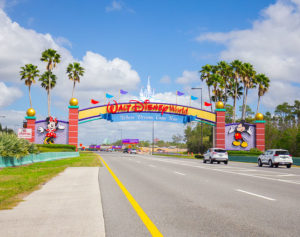Posted on October 22, 2019 by Wendy Frost

“This research demonstrates the value and importance of data analytics as a powerful tool in improving tourists’ experiences in theme parks,” said Wu, an assistant professor. “Data mining and visualization help to catch insightful patterns in waiting times for Disney attractions. After cleaning and transforming the massive raw data, the analytical models will allow Disney to formulate effective strategies from the perspective of operations management.”
Amusement parks have introduced different approaches to reduce standard waiting times. Some are at no extra cost to guests while others require a price premium. These approaches usually feature a variety of strategies allowing guests to bypass the standard waiting line or enter an express lane featuring a minimal wait.
Using multiple regression analysis and a dataset from 2012 to 2018, the researchers developed a statistical model that allowed them to predict the expected average daily waiting times at Disney’s Orlando theme parks. They also identified factors that affect waiting times for the parks’ most popular attractions.
Overall, the researchers studied a sample of 13 rides over 17 seasons to build their models. The research provided statistical guidance on seasonal differences in waiting times while allowing the researchers to predict the average waiting time for any given attraction depending on the season.
The research suggested that popularity is dependent upon the season of the year. December is the peak season. September is the low season. In March, June, July and August, waiting times are longer during the weekdays than on the weekends. In the other months, the opposite is true.
The UTSA study also showed that the most popular attractions at the Magic Kingdom, Animal Kingdom, Epcot and Hollywood Studios are, respectively, Seven Dwarfs Mine Train, Avatar Flight of Passage, Soarin’ Around the World and Slinky Dog Dash.
“Theme park operators such as Disney can use the outcomes from predictive analytics to innovate new or enhance existing operations,” said Leung, associate professor and chair. “The results also provide guidance on more effective waiting system design, capacity planning, manpower and ride scheduling as well as revenue management. As a consequence, better service operations will lead to higher customer satisfaction.”

